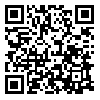Volume 18, Issue 4 (11-2019)
TB 2019, 18(4): 107-119 |
Back to browse issues page
Ethics code: IR.SSU.SPH.REC.1395.21
Download citation:
BibTeX | RIS | EndNote | Medlars | ProCite | Reference Manager | RefWorks
Send citation to:



BibTeX | RIS | EndNote | Medlars | ProCite | Reference Manager | RefWorks
Send citation to:
Mirhoseni S J, Mazloomy S, Moqaddasi Amiri M, alizadeh S. The Study of Blood Pressure Related Factors Based on Health Belief Model in Yazd in 2017. TB 2019; 18 (4) :107-119
URL: http://tbj.ssu.ac.ir/article-1-2980-en.html
URL: http://tbj.ssu.ac.ir/article-1-2980-en.html
School of Public Health, Kerman University of Medical Sciences, Kerman, Iran , alizade2009@yahoo.com
Abstract: (3563 Views)
Introduction: Hypertension is a chronic disease that causes a great deal of harm to the individual, which is the leading cause of disability and death worldwide, accounting for one eighth of all deaths. This disease is not treatable but it is manageable. Therefore, this study aimed to investigate factors related to hypertension based on health belief model in Yazd. Methods: This descriptive cross-sectional study was performed on 400 people over 30 years old in Yazd city. Sampling was done by cluster method. Subjects were included in the study according to the address of the headers. Questionnaires were completed by self-report and interview. Data collection tools were demographic questionnaire, awareness questions and health belief model. SPSS 15 software was used for data analysis. Statistical indices, Mann-Whitney U test, Kruskal-Wallis and Spearman correlation were used to analyze the results. Results: The mean and standard deviation of age were 44.08 ±11.6 years. There was a significant relationship between demographic variables of age, gender, occupation, education, marital status and history of hypertension in relatives. Among the constructs of health belief model, only the perceived barriers showed a significant relationship with blood pressure (P <0.01). Conclusion: Since there is a significant relationship between perceived barriers and hypertension, it is suggested that future interventions be designed to reduce perceived barriers (No need to change lifestyles, lack of time for physical activity, cost of regular blood pressure control, and no family accompanying diet changes) and blood pressure control.
Type of Study: Applicable |
Subject:
Special
Received: 2019/11/3 | Accepted: 2020/04/26 | Published: 2020/04/26
Received: 2019/11/3 | Accepted: 2020/04/26 | Published: 2020/04/26
Send email to the article author
| Rights and permissions | |
 |
This work is licensed under a Creative Commons Attribution-NonCommercial 4.0 International License. |







